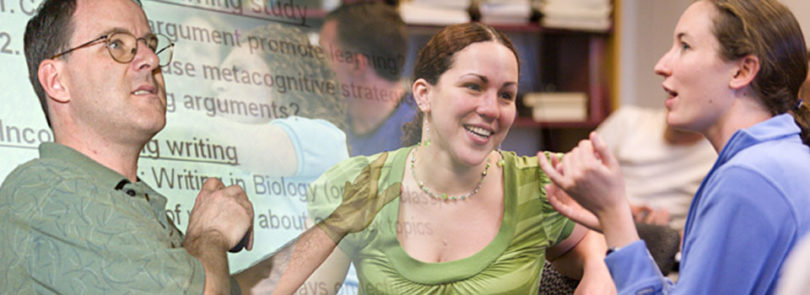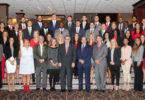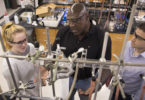Have you ever held a lecture that didn’t go so well? Have you ever looked up from your presentation and seen that you’ve got the attention of maybe one-third of your students? Have you ever wanted to be better?
Norris Armstrong, an assistant professor of genetics who teaches introductory classes, is researching what professors can do to help students in 300-person science lectures, where one-on-one attention is impossible.
“It’s easy to blame the students… but if you examine things closely, you can’t really put all of the blame on them,” he said. “Part of it is the way we’re teaching.”
The downfall of traditional lecture format classes is that it encourages memorization, not understanding or retention of material, he said.
Armstrong divided his research into three parts, experimenting with guided writing assignments, cooperative learning and choose-your-own-adventure labs. The results, he said, were enlightening.
The data revealed that students in cooperative learning classrooms did slightly better, came to class more often and enjoyed the class more than the control group. Ninety-two percent of students who participated wanted to see more done with it.
Armstrong advocates dividing a large lecture in small groups, making group members sit with each other and devoting up to
15 percent of each class to group work or discussion. It’s also essential to base part of the grade on group performance, he said. This makes the class less impersonal and increases student accountability, he said.
“If you have to show up every day and talk to your neighbors and you’re always ill prepared, it’s going to get a little embarrassing. It actually can increase students’ likelihood to prepare for class more than they normally would,” he saidHave you ever held a lecture that didn’t go so well? Have you ever looked up from your presentation and seen that you’ve got the attention of maybe one-third of your students? Have you ever wanted to be better?
Norris Armstrong, an assistant professor of genetics who teaches introductory classes, is researching what professors can do to help students in 300-person science lectures, where one-on-one attention is impossible.
“It’s easy to blame the students… but if you examine things closely, you can’t really put all of the blame on them,” he said. “Part of it is the way we’re teaching.”
The downfall of traditional lecture format classes is that it encourages memorization, not understanding or retention of material, he said.
Armstrong divided his research into three parts, experimenting with guided writing assignments, cooperative learning and choose-your-own-adventure labs. The results, he said, were enlightening.
The data revealed that students in cooperative learning classrooms did slightly better, came to class more often and enjoyed the class more than the control group. Ninety-two percent of students who participated wanted to see more done with it.
Armstrong advocates dividing a large lecture in small groups, making group members sit with each other and devoting up to
15 percent of each class to group work or discussion. It’s also essential to base part of the grade on group performance, he said. This makes the class less impersonal and increases student accountability, he said.
“If you have to show up every day and talk to your neighbors and you’re always ill prepared, it’s going to get a little embarrassing. It actually can increase students’ likelihood to prepare for class more than they normally would,” he said.








